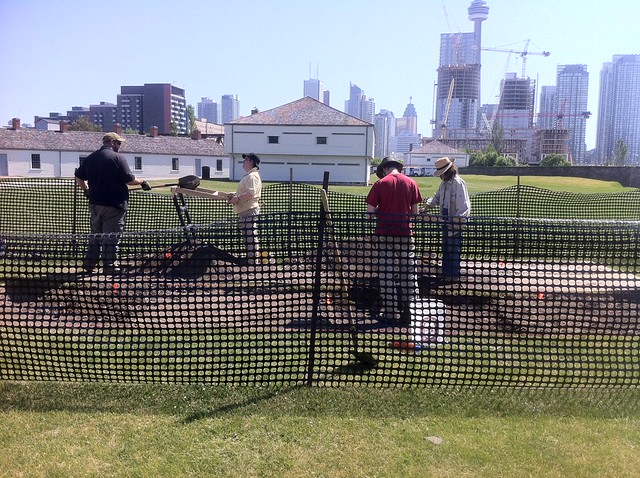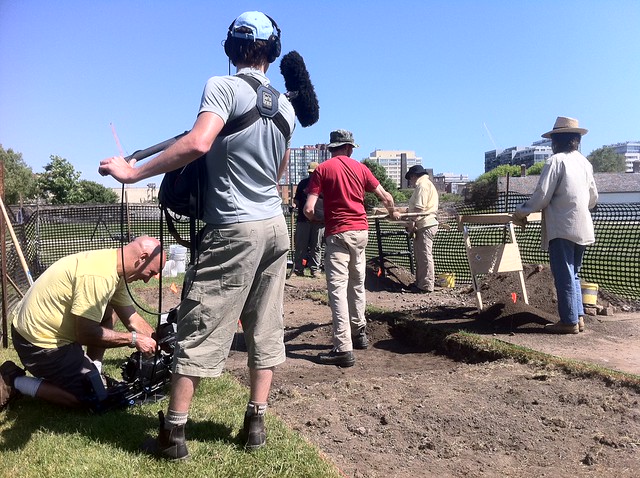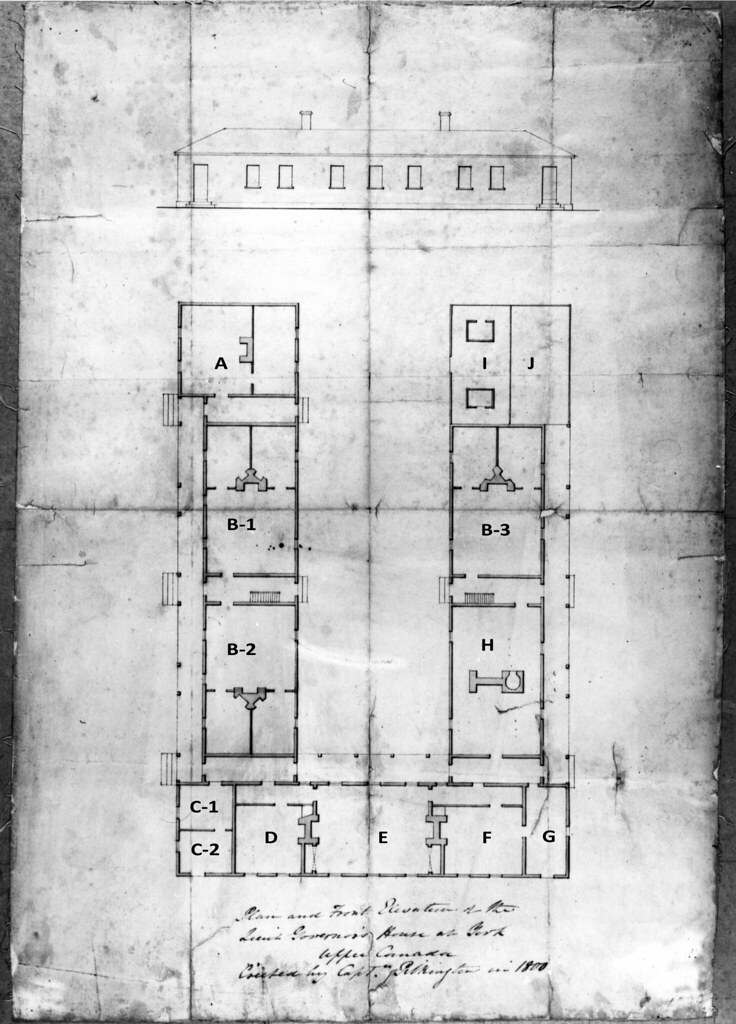
Like many museums, Fort York shows off only part of its collection. In traditional museums, it’s simply a fact of space: there just isn’t enough room to display everything at once. With Fort York it’s a little different: many of the buildings — or rather, the ruins of buildings — and artifacts are hidden underground, waiting to be excavated. We don’t expect to have archaeological digs in Toronto; we’ve been trained to think they’re more suited to Rome or Athens. But one by the local firm ASI is beginning right now at the fort, and Spacing will be there to cover it. The excavation, sponsored by History Television of Shaw Media, is being documented by YAP Films for an upcoming film about the War of 1812.
All buildings at the fort were destroyed in the aftermath of the Battle of York. The ones we see today were built in 1813-16 among the foundations of the original structures. The dig underway now will be peeling back almost two centuries of layers to reveal Government House, the residence of the Lieutenant Governor (LG) of Upper Canada.

The first Government House was constructed at the eastern edge of York on orders from John Graves Simcoe (the first LG of Upper Canada) in 1797 but when only the wings had been completed they were taken over as Parliament buildings. In 1799 Simcoe’s successor, Lt. General Peter Hunter, ordered a new residence for the LG to be built within the fort’s walls on the western side of Garrison Creek. It was a one-story frame building in a ‘U’ shape having two partial cellars. An ‘as-built’ plan of it survives (see below) but feels as if no one really knew which rooms would be used by whom. On account of Hunter’s military rank the building was paid for from the Military Chest, which was a problem when LG Francis Gore, his civil successor, arrived in York and for a time was refused permission to occupy the Government House by the Commandant of Fort York.
Later, General Isaac Brock occupied the house briefly after Gore left Upper Canada on home leave as war loomed in 1811. It was torched and burnt to the ground by Americans during the Battle of York in April, 1813, six months after Brock’s death on the Queenston heights battlefield.
When Fort York was rebuilt in 1813-16, it was laid out around the site of Government House, which was left empty and buried under fill. Since no other buildings were ever constructed over top, the chances of finding cellar and foundation walls as well as artifacts are great.
Stay tuned for regular reports from Spacing’s Bronwyn Clement on discoveries at this most exciting dig. Bronwyn, born and raised in Toronto, is a student at College of the Atlantic studying human ecology and is interning with Spacing for the summer.
With files from Stephen Otto. Shawn Micallef is on the board of the Friends of Fort York.
Above photos courtesy of YAP Films. Letters added to Capt. Robert Pilkington’s plan of the LG’s House below may help identify rooms in later Spacing posts (Credit: National Archives of Canada, C 16016)





4 comments
So exciting! I’d love to see more interest build around Fort York.
I don’t have cable, but maybe I’ll make some extra visits to my folks’ house to watch.
Where is Tony Robinson and the Time Team when yo need them?
http://www.channel4.com/programmes/time-team
you mean “As Adam Giambrone as we wanna be”
Definitely keep us updated.